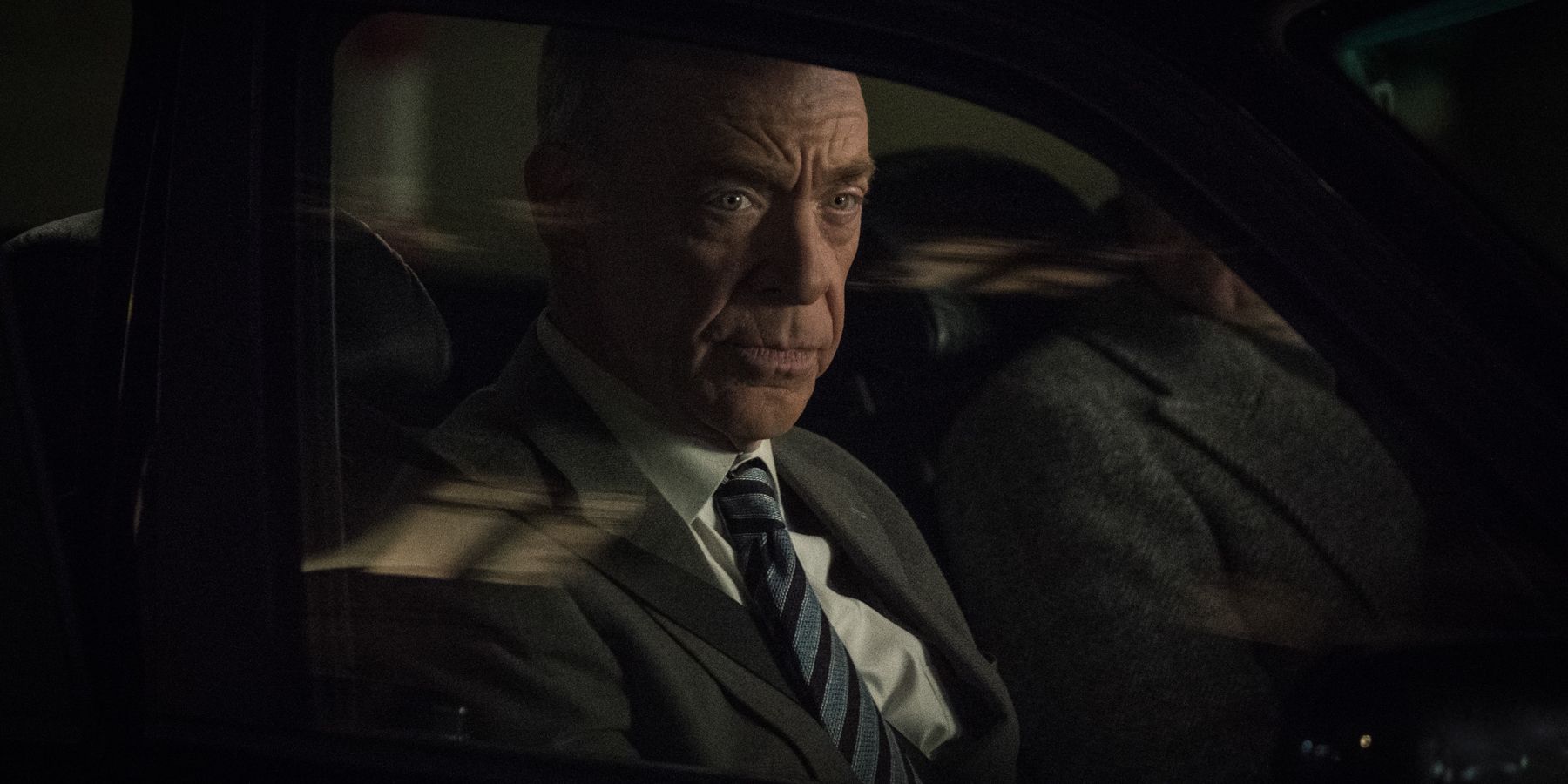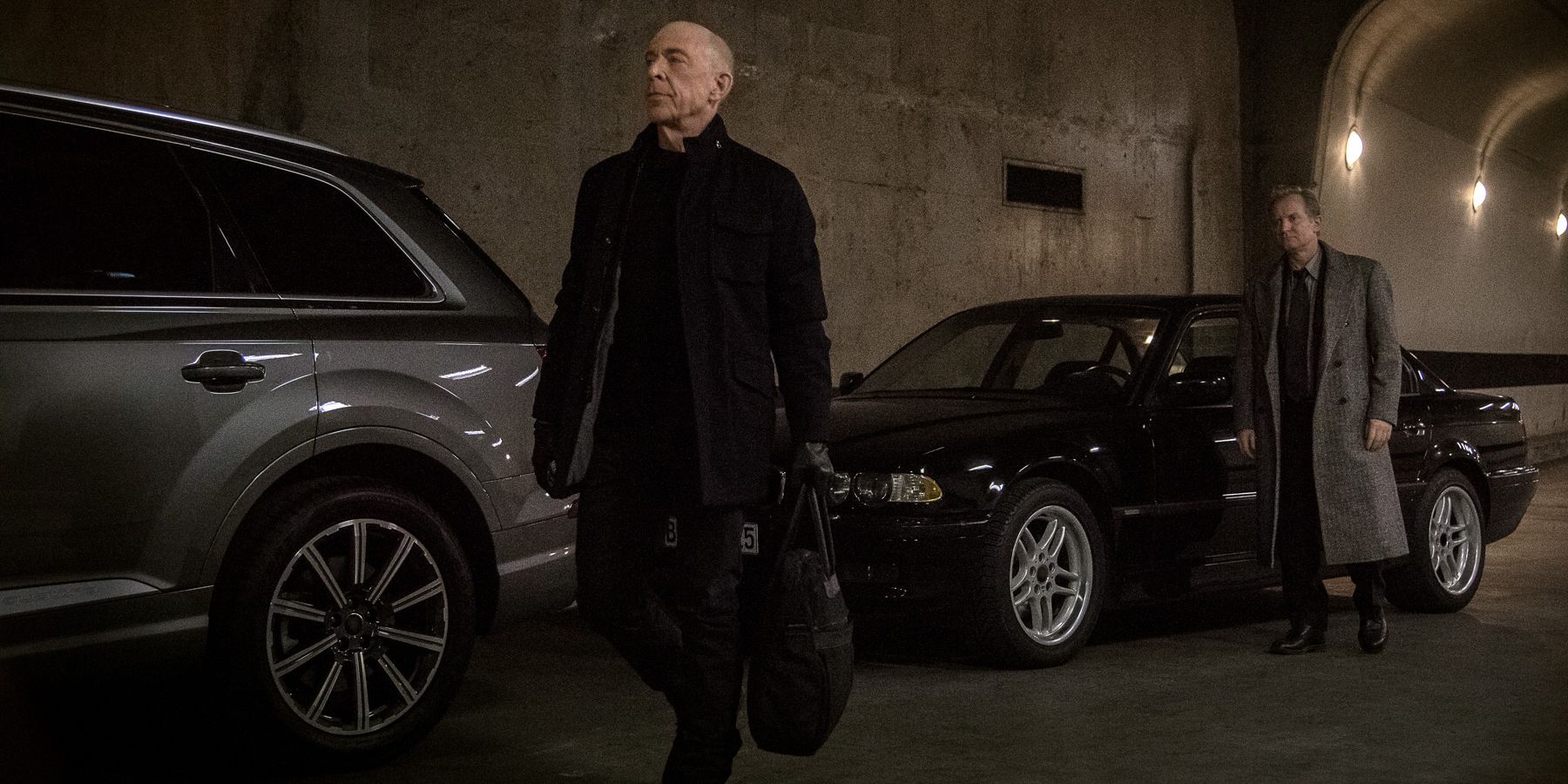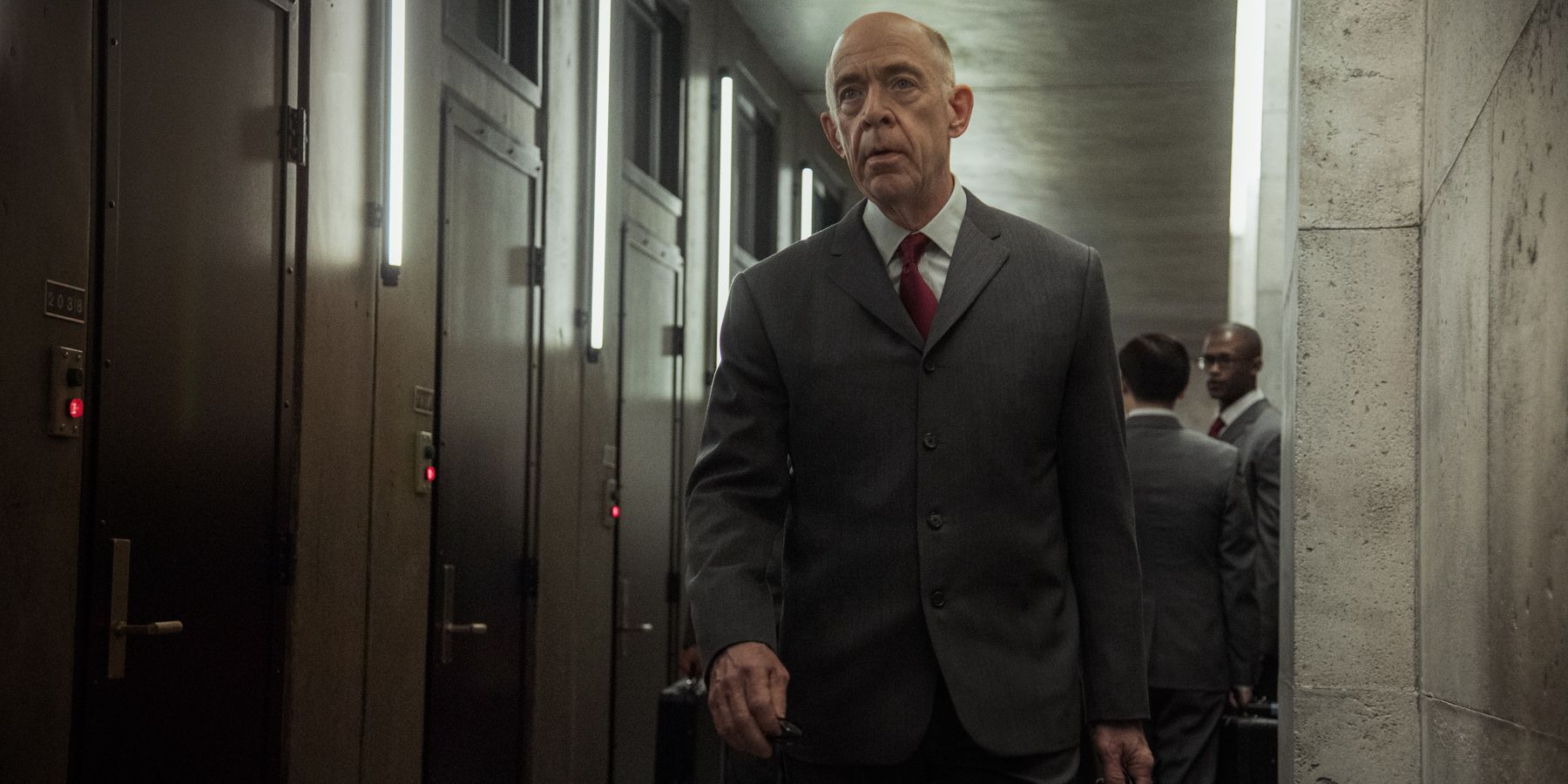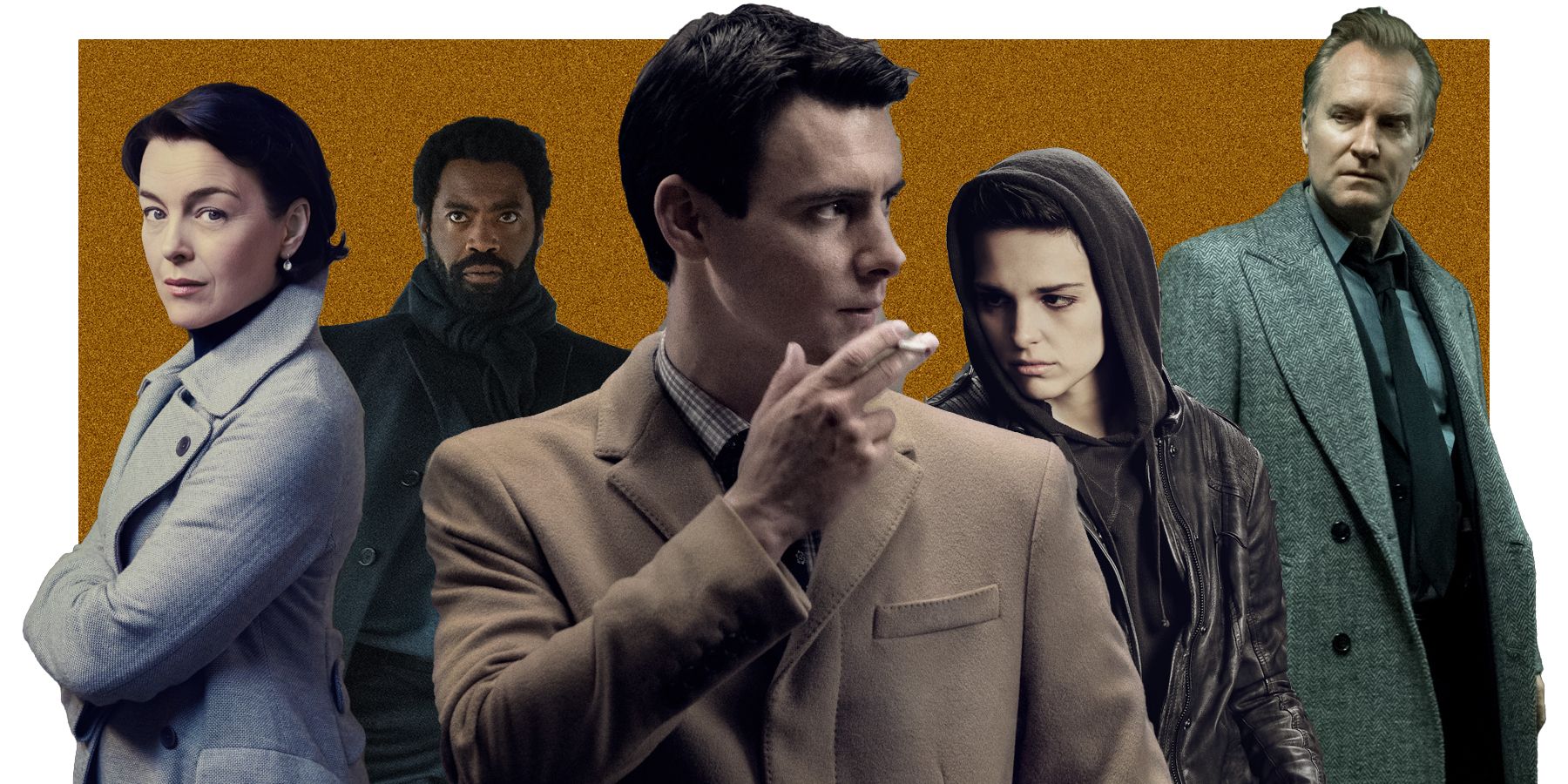Every so often a new show comes around offering a confluence of so many strong elements that it instantly becomes a must-watch. The first show to do that in 2018 is Starz' Counterpart. A stylish espionage thriller with a sci-fi slant, the series blends genres into an exquisite concoction that is both fascinatingly original and comfortingly familiar at the same time. The story ticks all of the requisite genre boxes of popular television today without being yet another comic book adaptation. It's a series unabashedly aimed at an adult audience, one that can appreciate the structure of the narrative and the existential crisis at the center.Created by The Jungle Book writer Justin Marks, the series begins with an exploration of the life of bureaucratic cog Howard Silk (J.K. Simmons) and all the œwhat if? questions that keep deeply unfulfilled people like him up at night. Howard's professional dissatisfaction is exacerbated by his wife's medical condition (she's in a coma following a traffic accident), and the unsettling discovery that he's not the only Howard Silk. As the series' title suggests, there are two of them thanks to a dimensional rift in the bowels of the building in which Howard has diligently, almost anonymously worked for the past three decades. Howard is literally pulled into the plot by his superiors, and introduced to what seems like a fantasy version of himself. Strong, confident, capable, the other Howard Silk is everything his meeker counterpart thinks he wants to be; he is the living embodiment of all the paths not taken. And for a man so taken with questioning certain life choices at the moment, this wrinkle is deeply distressing to say the least.Related: Ash vs. Evil Dead Trailer & Poster: Evil is After Ash's DaughterThat alone should be enough to make even the most cynical TV watcher curious about this new series. But if you're still on the fence, here are few more reasons why Counterpart is the first must-see TV series of 2018:
It Has a Great Dual Performance From J.K. Simmons
Dual roles are a tricky thing. In even the most talented hands, it's difficult to turn them into something more than a visual gimmick. There've been some notable ones on TV recently, like Ewan McGregror's Golden Globe-winning performance in Fargo and James Franco's sleazy twofer in HBO's The Deuce. But both actors were playing siblings; two people with distinctly different personalities who just happened to look exactly like one another. Counterpart, on the other hand, is the story of two versions of the same man, and Simmons delivers a pair of performances that are equally engaging yet entirely distinct from one another.
The first Howard Silk we meet is a mild-mannered everyman who happens to have a job requiring the utmost secrecy. (It's so secret even he's not entirely sure what he's doing.) He's suffering from a sudden burst of ambition and lack of fulfillment late in life that finds him thrust into a situation he's unable at first to comprehend. By contrast, his double is everything he's not. The other Howard is cold, calculating, and nobody's fool; he's crossed over with a shadowy mission involving inter-dimensional espionage, and you believe him when he says he has a handle on the situation.
The two Howards could not be more different, but what makes Simmons' performance so memorable is that, despite the outward dissimilarities between them, he's able to convey the ways in which they still are the same man. They share the same memories of childhood, which means their paths ran parallel up to a certain point. What Simmons' performance does is make the question of when and why they diverged as or more interesting than the plot that's currently unfolding around them.
It's John le Carré meets Philip K. Dick
The tendency to describe a new film or TV series by mashing up two disparate products can sometimes leave you scratching your head. That custom of boiling everything not from a pre-existing IP down to the basest elevator pitch doesn't always do the favor those using it think it does. With Counterpart, though, the elevator pitch is baked directly into the show's appeal. For one thing, explaining the show to someone who knows nothing about it would take 20 minutes. So, instead, just say, œIt's John le Carré meets Philip K. Dick. If that doesn't have whoever you're talking with intrigued then they're a lost cause.
If you're a fan of either author, Counterpart is probably going to be right up your alley. If you like both of them, you're likely going to be very pleased with the results. Think Total Recall's (or We Can Remember it For You Wholesale') twisted wish fulfillment and desire to escape the confines of an unsatisfying existence, and add a dash of the overwhelming sense of world-weariness in The Spy Who Came in From the Cold, and you have a pretty good idea of what Counterpart is like.
Going back to Simmons' performance, one is reminded of Richard Burton's conflicted Alex Leamas in the 1965 adaptation of le Carré's Cold War novel. It's as though he split that character in two and fashioned the twin Howard Silks. The comparison is helped by the series' German locale, which accentuates its contemporary Cold War atmosphere all the more.
The Production Design is Top Notch
Counterpart brings with it an strong sense of place, one that highlights the ways in which both dimensions are simultaneously familiar and alien. Early on, sci-fi elements are mostly subtle; they're part of a particular aesthetic more than anything that serve to underline the ways in which the story unfolds in a heightened reality, one that, for the purpose of the narrative, is distinctly aware just how knotty that reality has become.
Like other genre shows, Counterpart owes a lot to how it looks. And its success is at least partially dependent on how well the production design accentuates its story and captivates the viewer. The design here is elevated but not flashy; it strikes the right balance between the world we know and one that feels enticingly off. From the machine-like uniformity of the red ties and grey suits worn by Howard and his fellow office drones to the conceptual luminosity of a transparent cell phone, there is some enticing artistry sprinkled about the otherwise concrete environs these characters live.
The first episode keeps things alluring without going overboard in the design department. As the series progresses, however, the design elements accumulate and call greater attention to themselves, but shining a light on them only helps immerse the viewer in the world even more. It's another example of how restraint in design, when called for, can elevate the otherworldly feel of a series to a greater degree than a more bombastic and in-your-face production design might have.
It Has a Strong Supporting Cast
Academy Award winner J.K. Simmons may be the star of the series, but Counterpart also enjoys a strong supporting cast that includes Olivia Williams (Rushmore, The Ghost Writer) and Harry Lloyd (Wolf Hall) as Howard's wife Emily and supervisor Peter, respectively. In addition, the series offers appearances from Jamie Bamber (Battlestar Galactica), Nicholas Pinnock (Fortitude, Captain America: The First Avenger), and Kenneth Choi (Spider-Man: Homecoming, 9-1-1). There are even memorable roles for Banshee standout Ulrich Thomsen and The Crying Game's Stephen Rea.
Given the emphasis on Simmons' dual role, you wouldn't really call this an ensemble, but Counterpart has nevertheless assembled a terrific supporting cast around its one-man, two-part lead. And some, like Williams' Emily, play an important part in the inter-dimensional intrigue running fueling the narrative.
-
All in all, Counterpart, its star, setting, and supporting cast combine to make this the first must-see television series of 2018.
Next: 2017-2018 Winter TV Premiere Dates: New & Returning Shows to Watch
Counterpart airs Sunday nights beginning January 21, but you can check out the premiere now on Starz.





